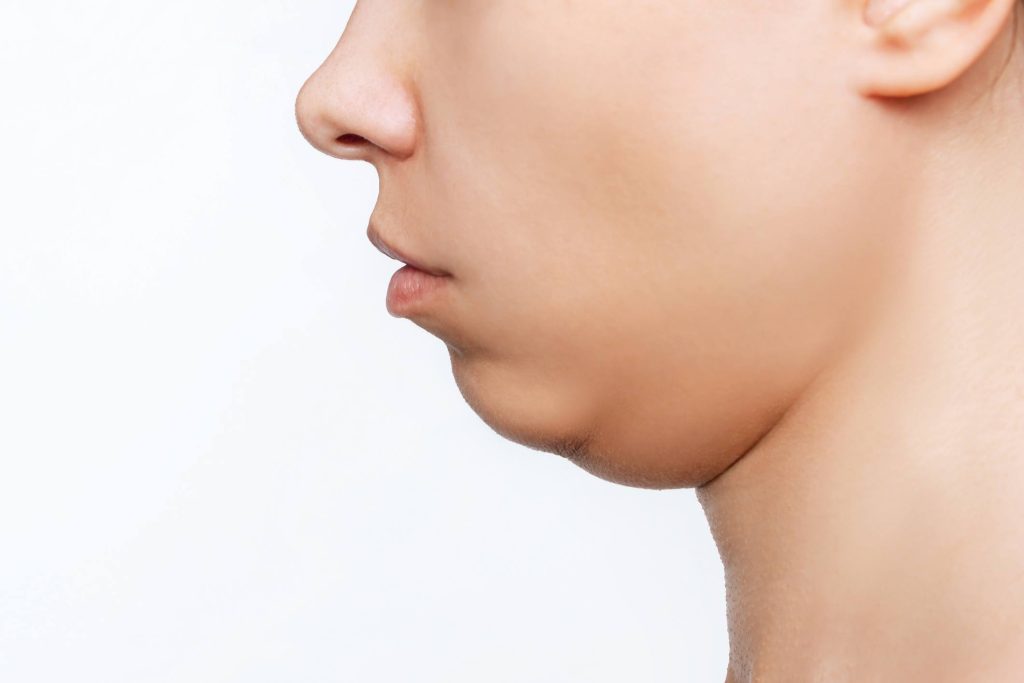Key Takeaways
-
Choose the Right Procedure: Understanding the different types of excess skin removal procedures for the face and treatment area can help you select the best technique for your double chin surgery with your surgical team.
-
Preparation is Key: Properly preparing for a surgical procedure, including following pre-op instructions and discussing expectations with your surgical team and surgeon, can lead to better outcomes.
-
Know What to Expect: Familiarize yourself with the surgery day process, including excess skin removal technique and meeting your doctor, to reduce anxiety and ensure a smoother experience.
-
Consider Combining Procedures: Combining double chin surgery with other cosmetic procedures, such as excess skin removal on the face, can enhance overall results and streamline recovery with the right technique and doctor.
-
Follow Post-Surgery Care: Adhering to post-surgery care guidelines from your doctor is crucial for a speedy and successful recovery.
-
Explore Non-Surgical Options: Non-surgical alternatives may offer effective results with less downtime and fewer risks, making them worth considering with your doctor for your face.
Understanding Double Chin Surgery
Definition
Double chin surgery, also known as submental liposuction, removes excess fat under the chin. This procedure aims to improve facial contouring. It targets the area between the chin and neck.
Purpose
The purpose of double chin surgery is to enhance the jawline. This can create a more defined profile. Many people seek this surgery to eliminate submental fullness. Submental fullness means having extra fat below the chin.
Consultation Importance
Consulting with a qualified plastic surgeon is crucial. They assess if you are a good candidate for the procedure. Surgeons evaluate your skin elasticity and overall health.
Candidacy Assessment
Surgeons check several factors:
-
Skin elasticity
-
General health
-
Amount of excess fat
Good skin elasticity helps achieve better results. Poor health may increase risks during surgery.
Benefits
Double chin surgery offers many benefits. One major benefit is an improved facial profile. A more defined jawline can boost self-confidence.
Another benefit is enhanced appearance in photos and videos. People often feel more attractive after the procedure.
Self-Confidence Boost
Improved self-confidence is a common outcome. Many patients report feeling happier with their appearance. This can lead to better social interactions and professional opportunities.
Types of Excess Skin Removal Procedures
Facelift (Rhytidectomy)
A facelift, or rhytidectomy, can remove excess skin around the neck. This procedure tightens the skin and underlying tissues. It provides a younger appearance by addressing sagging and wrinkles. Surgeons make incisions near the hairline and ears. They then lift and reposition the skin. This method is effective for significant sagging.
Neck Lift
A neck lift targets excess fat and loose skin in the neck area. It is suitable for those with prominent double chins due to aging or weight loss. Surgeons make small incisions behind the ears or under the chin. They remove or tighten excess skin and muscle tissue. This procedure improves skin elasticity and contours.
Liposuction
Liposuction removes fat deposits from specific areas, including under the chin. It is ideal for patients with good skin elasticity but excess fat. Small incisions are made, and a thin tube called a cannula is inserted to suction out fat. Liposuction alone may not address loose skin.
Non-Invasive Techniques
Non-invasive techniques complement traditional surgeries for double chin reduction:
-
Kybella Injections: These injections dissolve fat cells under the chin.
-
CoolSculpting: This technique freezes and eliminates fat cells without surgery.
-
Ultherapy: Uses ultrasound technology to tighten skin by stimulating collagen production.
These methods offer minimal downtime compared to surgical options.
Preparing for Surgery
Pre-Operative Instructions
Patients must follow specific pre-operative instructions. These include dietary restrictions and medication adjustments. Avoid eating or drinking after midnight before the surgery. This helps reduce risks associated with anesthesia.
Certain medications may need to be stopped a few days before the procedure. Blood thinners, for example, can increase bleeding risks during surgery. Discuss all medications with your doctor to ensure safety.
Quitting Smoking
Quitting smoking is crucial before undergoing plastic surgery. Smoking affects blood circulation, which can delay healing. It also increases the risk of complications such as infections.
Doctors usually advise quitting at least two weeks before surgery. Avoiding certain supplements like vitamin E and fish oil is also important as they can impact blood clotting.
Choosing the Right Surgeon
Selecting the right surgeon is vital for a successful outcome. Verify their credentials by checking board certification in plastic surgery. This ensures they have proper training and experience.
Reviewing before-and-after photos of previous patients can provide insight into the surgeon’s skill level. Look for consistency in results and satisfaction among patients.
Meeting with Your Surgical Team
A meeting with your surgical team helps clarify goals and expectations. Discuss your desired appearance and profile changes with the doctor. They will explain the approach they plan to take during the procedure.
This appointment is also an opportunity to ask questions about anesthesia, recovery time, and potential risks.
The Role of Anesthesia
Anesthesia plays a critical role in double chin plastic surgery. Most procedures use general anesthesia, ensuring patients are asleep and pain-free during the operation.
The anesthesiologist monitors vital signs throughout the procedure to ensure patient safety. Understanding this process can help ease any anxiety about the surgery.
Understanding Surgical Techniques
Different techniques are used in double chin plastic surgery. Liposuction involves inserting a cannula to remove excess fat under the chin. Another approach may include tightening loose skin for better facial contours.
Discussing these techniques with your doctor helps you understand what will happen during your procedure.
Surgery Day Insights
Anesthesia Types
On the day of surgery, patients can expect to receive anesthesia. There are two common types: local and general. Local anesthesia numbs only the chin area. General anesthesia puts the patient to sleep.
The choice depends on the doctor’s recommendation and patient preference. Local anesthesia allows for a quicker recovery.
Procedure Duration
Double chin plastic surgery typically takes between one to two hours. The duration depends on the complexity of the procedure. Some surgeries may take longer if more fat needs removal.
Patients should plan their day around this timeframe. Arriving early ensures all pre-surgery preparations are complete.
Incision Sites
Surgeons make small incisions under the chin or behind the ears. These incisions allow access to fatty tissues. They are usually small enough to minimize visible scarring.
The exact placement depends on individual anatomy and surgical method chosen by the surgeon.
Fat Removal Techniques
Fat removal is a key part of double chin surgery. Surgeons use various methods for this process:
-
Liposuction: A common technique involving a thin tube called a cannula.
-
Laser-assisted lipolysis: Uses laser energy to melt fat before removal.
-
Direct excision: Cutting out fat directly through incisions.
Each method has its benefits and suitability based on patient needs.
Support System Importance
Having a support system is crucial on surgery day. Patients need someone to drive them home post-surgery due to anesthesia effects. This person can also help with initial post-surgery care at home.
Support includes arranging comfortable resting areas at home, preparing meals, and ensuring medication schedules are followed.
Post-Surgery Care
Post-surgery care begins immediately after leaving the clinic. Patients should follow all instructions given by their surgeon carefully:
-
Keep incision sites clean and dry.
-
Take prescribed medications as directed.
-
Avoid strenuous activities for at least two weeks.
-
Attend all follow-up appointments.
Combining Surgeries for Enhanced Results
Benefits of Combination
Combining double chin surgery with other facial procedures offers many benefits. Patients often seek a more harmonious outcome. By addressing multiple areas, the overall result can be more balanced and natural-looking.
Plastic surgeons frequently recommend combining surgeries to achieve these goals. For example, a facelift can be performed alongside double chin surgery. This combination helps tighten the skin around the neck and jawline, enhancing the overall appearance.
Techniques Used
Different techniques are used when combining surgeries. Tumescent fluid is often employed in liposuction procedures. It reduces bleeding and swelling during surgery. The fluid also provides local anesthesia, making the process safer.
A common combination includes liposuction and a facelift. Liposuction removes excess fat from under the chin, while the facelift tightens sagging skin. This dual approach maximizes aesthetic improvements.
Recovery Time
Combining surgeries can reduce overall recovery time. Instead of recovering from two separate procedures, patients heal from both at once. This means less time spent away from work or daily activities.
Patients often appreciate this aspect of combined surgeries. It allows them to return to their routines faster, minimizing disruption to their lives.
Cost Savings
There are potential cost savings when combining procedures. Undergoing multiple surgeries separately can be expensive due to repeated anesthesia and facility fees.
When procedures are combined, these costs are consolidated. Patients only pay for one operating room session and one anesthesia administration. This can make achieving their aesthetic goals more affordable.
Considerations
While there are many benefits, there are also considerations to keep in mind. Combining surgeries may increase the complexity of the procedure. It’s important to choose experienced plastic surgeons who specialize in these techniques.
Patients should discuss their health history and aesthetic goals with their surgeon. Genetics play a role in determining how well someone might respond to certain procedures.
Post-Surgery Care and Recovery
Wound Care
Proper wound care is vital after double chin plastic surgery. Clean the incision area with mild soap and water. Pat dry gently. Avoid using harsh chemicals or scrubbing the wound. Keep the area covered with a sterile bandage as advised by your surgeon.
Activity Restrictions
Limit physical activities for the first few weeks. Avoid heavy lifting and strenuous exercises. Gentle walking is encouraged to promote blood circulation. Rest with your head elevated to reduce swelling.
Managing Discomfort
Discomfort is common post-surgery. Use prescribed pain medications as directed. Apply cold compresses to minimize swelling and bruising. Follow a balanced diet rich in vitamins to aid healing.
Recovery Timeline
Expect some swelling and bruising initially. These symptoms typically subside within two weeks. Full recovery can take up to six months. Results will gradually become more visible as swelling decreases.
Follow-Up Appointments
Attend all scheduled follow-up appointments. These visits help monitor healing progress and address any complications early on. Your surgeon may adjust your care plan based on these assessments.
Non-Surgical Alternatives
Kybella Injections
Kybella injections offer a non-surgical solution for reducing double chins. Approved by the FDA in 2015, Kybella uses deoxycholic acid to break down fat cells. These injections target stubborn fat under the chin.
Each session takes around 15-20 minutes. Patients may need multiple sessions for optimal results. The number of sessions varies based on individual needs.
CoolSculpting
CoolSculpting is another popular non-invasive technique. This method uses controlled cooling to freeze and eliminate fat cells. It targets the fat without damaging surrounding tissues.

A CoolSculpting session lasts about an hour. Most patients see results after one or two treatments. There might be some redness or swelling, but these side effects are temporary.
Effectiveness Comparison
Non-surgical treatments like Kybella and CoolSculpting are effective for many people. However, their results are usually less dramatic compared to surgical options.
Kybella can take several weeks to show visible changes. CoolSculpting also requires patience, with full results appearing after a few months.
Recovery Time
Recovery time for non-surgical methods is minimal. Patients can return to their daily activities almost immediately after treatment.
Kybella might cause some swelling and bruising that lasts a few days. CoolSculpting has fewer side effects, mainly minor discomfort from the cold application.
Side Effects
Both Kybella and CoolSculpting have mild side effects compared to surgery. Kybella’s common side effects include swelling, bruising, and numbness at the injection site. Rarely, it can cause nerve injury leading to an uneven smile or facial weakness.
CoolSculpting’s side effects are typically limited to redness, swelling, and temporary skin sensitivity due to cold exposure.
Suitability for Minimal Downtime
Non-surgical alternatives are suitable for those seeking minimal downtime and less invasive options. They provide a way to reduce double chins without undergoing surgery.
These techniques work well for individuals with small amounts of stubborn fat under the chin. Those looking for significant changes might still consider surgical procedures for more noticeable results.
Pros and Cons of Treatment Options
Surgical Procedures
Surgical procedures offer many benefits. They provide long-lasting results. This means patients often do not need further treatments. The aesthetic improvements are significant. Surgeons can precisely target the treatment area, removing excess fat and tightening skin.
However, there are limitations and risks. Scarring is a common concern. Even with skilled surgeons, scars may be visible. Recovery periods are also longer compared to non-surgical options. Patients might experience discomfort and swelling for several weeks.
Risks of Surgery
Surgery carries inherent risks. Infection is one such risk. Despite sterile environments, infections can happen. Anesthesia complications may also arise during surgery. Some patients might react negatively to anesthesia.
Another risk is dissatisfaction with results. While many patients achieve desired outcomes, some might not be happy with the appearance post-surgery.
Non-Surgical Treatments
Non-surgical treatments have their own set of advantages. These options include injections and laser therapies. They usually involve minimal downtime. Most patients can return to daily activities quickly after each session.
The treatments are less invasive than surgery. This reduces the risk of scarring or infection significantly.
Drawbacks of Non-Surgical Options
Non-surgical treatments have drawbacks too. Results are often temporary and require multiple sessions to maintain effectiveness. For example, injections might need repeating every few months.
These treatments may not provide dramatic changes like surgery can offer. They work best for minor adjustments rather than significant transformations.
Comparing Both Approaches
When comparing both approaches, it’s essential to consider individual needs and preferences:
-
Surgical procedures: Offer long-term results but come with higher risks.
-
Non-surgical options: Provide quick recovery but need frequent maintenance.
Many patients choose based on their comfort level with these factors.
Summary
You’ve got the lowdown on double chin surgery and all the options available. From understanding the procedures to post-surgery care, you’re now equipped with the knowledge to make an informed decision. Whether you opt for surgical or non-surgical methods, each has its pros and cons.
Ready to take the next step? Consult with a certified plastic surgeon to discuss your goals and find the best treatment for you. Don’t wait—embrace a more confident, sculpted you today!
Frequently Asked Questions
What is double chin surgery?
Double chin surgery, also known as submental liposuction or neck lift, removes excess fat and tightens skin under the chin. It enhances jawline definition and reduces sagging.
How do I prepare for double chin surgery?
Before surgery, follow your surgeon’s instructions. Avoid smoking, certain medications, and maintain a healthy diet. Arrange for post-surgery transportation and care.
What happens on the day of double chin surgery?
On surgery day, you’ll undergo anesthesia. The procedure typically lasts 1-2 hours. You’ll be monitored closely during recovery before being discharged.
Can I combine double chin surgery with other procedures?
Yes, combining surgeries like a facelift or eyelid lift can enhance results. Discuss options with your surgeon to tailor a treatment plan that meets your goals.
What is the recovery time after double chin surgery?
Recovery usually takes about 1-2 weeks. Swelling and bruising are common but subside over time. Follow post-op care instructions for optimal healing.
Are there non-surgical alternatives to reduce a double chin?
Yes, non-surgical options include Kybella injections and CoolSculpting. These treatments reduce fat without incisions but may require multiple sessions.
What are the pros and cons of double chin treatment options?
Surgical options offer immediate, dramatic results but involve downtime and risks. Non-surgical treatments have minimal recovery but may provide less noticeable outcomes over time.





